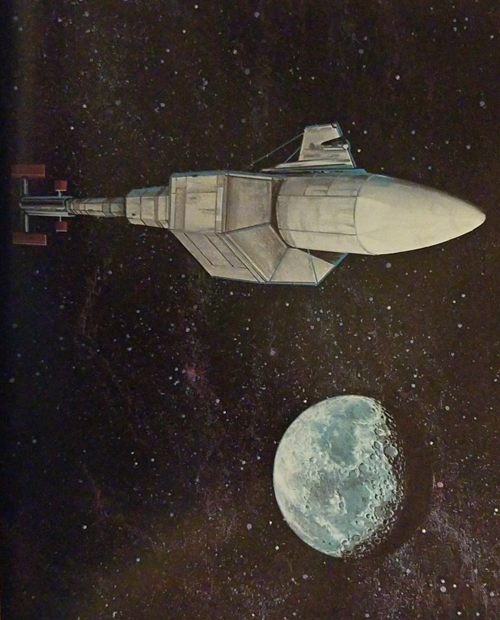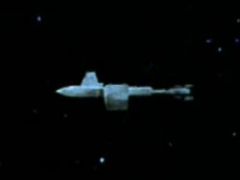Difference between revisions of "DY-500 class (FASA)"
From Trekipedia
(Created page with "{{MyriadDY500}} {{ImageInfoBox2|name=DY-500 class|file=dy500_class-sfc.jpg|caption=DY-500 class (SFC)}} {{TableRow|title=Commissio...") |
m |
||
| Line 6: | Line 6: | ||
{{BannerFASA}} | {{BannerFASA}} | ||
In [[2010s (FASA)#2019|2019]], the [[DY-100 class (FASA)|DY-100 class]] underwent extensive design and performance upgrades to become the [[DY-500 class (FASA)|DY-500 class]]. The Amjet V Thrusters were the most efficient engines of the 21st century, and the magnetohydrodynamic generator provided all on-board power. The class was particularly popular for travel to and within the asteroid belt, and it remained in service until [[2050s (FASA)#2055|2055]].<ref name="SFC"/> | In [[2010s (FASA)#2019|2019]], the [[DY-100 class (FASA)|DY-100 class]] underwent extensive design and performance upgrades to become the [[DY-500 class (FASA)|DY-500 class]]. The Amjet V Thrusters were the most efficient engines of the 21st century, and the magnetohydrodynamic generator provided all on-board power. The class was particularly popular for travel to and within the asteroid belt, and it remained in service until [[2050s (FASA)#2055|2055]].<ref name="SFC"/> | ||
| + | {{Clear|value=left}} | ||
| + | ==Image Gallery== | ||
| + | <gallery mode="packed"> | ||
| + | woden-tos53_original.jpg|[[S.S. Woden (FASA)|S.S. ''Woden'']] | ||
| + | </gallery> | ||
| + | {{Clear|value=left}} | ||
{{InfoBox|float=left|name=Specifications<ref name="SFC"/>}} | {{InfoBox|float=left|name=Specifications<ref name="SFC"/>}} | ||
{{TableRow|title=Length|data=145 [[meter|m]]}} | {{TableRow|title=Length|data=145 [[meter|m]]}} | ||
Latest revision as of 20:52, 15 February 2023
Myriad Universes: DY-500
In 2019, the DY-100 class underwent extensive design and performance upgrades to become the DY-500 class. The Amjet V Thrusters were the most efficient engines of the 21st century, and the magnetohydrodynamic generator provided all on-board power. The class was particularly popular for travel to and within the asteroid belt, and it remained in service until 2055.[1]
Image Gallery
Specifications[1]
| Length | 145 m |
| Beam | 33 m |
| Draught | 47 m |
| Mass | 4.17 million kg |
| Cargo Modules | Each 19.8x10.7m (2900 m³ usable volume) |
| Ship's Complement | • Officers: 3 • Crew/ Passengers: 33 |
Performance[1]
| Range | • Standard: 600 million km • Maximum: 1.15 billion km |
| Velocity | • Cruising: 135,000 km/hour |
| Typical Voyage Duration | 185 days (Earth-Asteropolis) |
| Thrust | 33,000 kg per fission engine |
Systems Overview[1]
| Navigation | Interplanetary Triangulation (3 body) Guidance |
| Communication | Laser Radiotelemetry |
| Onboard Power | Magnetohydrodynamic Electric Generator |
| Computer | Elementary Independent Thought Processing Digital |
| Gravity | .2g internally sustained |
| Atmosphere | 25% O2; 9% humidity |
| Sustenance Duration | 424 days at standard ship's complement of 36 |
DY-500 class vessels
Prime Timeline
EU Timeline
S.S. Conquest DY-257 • S.S. Hastings DY-209 • S.S. Malaspina DY-223 • S.S. Mariposa NAR-7678 • S.S. Sylvania DY-302 • S.S. Toledo Sun DY-238 • S.S. Yacona DY-220 • S.S. Yakima DY-212
Kelvin Timeline
FASA Timeline
U.N.S.S. Courageous • U.N.S.S. Tiller • U.N.S.S. Wheeler • S.S. Woden
Notes and References
- ↑ 1.0 1.1 1.2 1.3 Goldstein, Stan et al (Authors). Spaceflight Chronology. Star Trek. Book. Wallaby Books. 1980.


